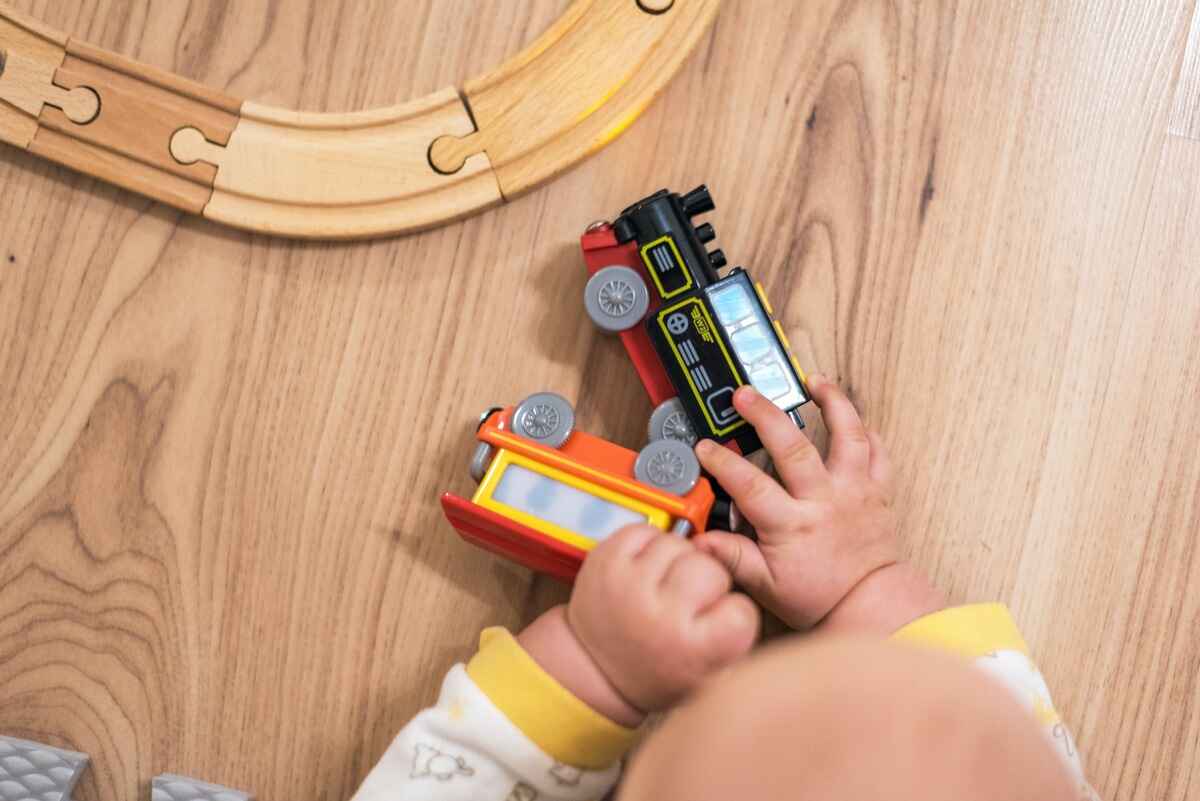As a parent, you know how much your child loves their toys – they’re their constant companions through thick and thin. But with all that love and attention, it’s no surprise that their toys can quickly become dirty, worn, and even germ-laden. From sticky fingerprints to mysterious stains, it can be a challenge to keep up with the mess that seems to accumulate around your child’s favorite playthings.
But it’s not just about appearances – dirty toys can also pose a health risk to your child. Germs, allergens, and even mold can lurk within the nooks and crannies of toys, waiting to make your little one sick. That’s why it’s essential to take the time to clean and disinfect your child’s toys regularly.
Of course, different toys require different cleaning methods, and it can be tricky to know where to start. But don’t worry – we’re here to help.
How Often Should I Clean Toys?
Toys that are played with frequently should be cleaned more often to keep them free of dirt, germs, and other debris.
Additionally, when your child is ill or has the flu, it’s essential to clean and sanitize toys more frequently to prevent the spread of germs. This means disinfecting toys that your child has come into contact with, such as those in their play area or those that they’ve shared with other children.
- Plastic toys that are used frequently should be cleaned at least once a week, while those kept in storage can be cleaned periodically, such as once a month or every few months.
- Plush toys that are used daily should be cleaned at least once a month, while for less frequently used plush toys, cleaning them every three to six months is a good idea. This study showed how plush toys are also more prone to bacteria due to the fact that they are harder to clean (1).
- Wooden toys that are played with regularly should be cleaned at least once a week. If they are kept in storage, it’s still important to clean them every few months.
- Bath toys are constantly exposed to water and humidity, which creates a breeding ground for bacteria and mold (2). It’s recommended to clean bath toys after every use.
- Toys that babies are most likely to put in their mouths or drop on the floor need the most frequent cleaning. It is recommended to clean them every one to two days.
- Outdoor toys should be cleaned at least once a month, but more frequent cleaning may be necessary depending on the level of use and exposure.
How To Clean Plastic Toys
Plastic toys are beloved by babies and come in various shapes and sizes, ranging from simple teething toys, basic rattles, and complex battery-operated toys that feature lights and sounds.
Before cleaning, check the label on the toy for any specific cleaning instructions or warnings. If the toy has batteries, remove them before cleaning. For small plastic toys, you can wash them by hand using soap and water. For larger toys or toys with intricate designs, consider putting them in the dishwasher on the top rack.
After washing, you can disinfect the toys by wiping them down with a solution of water and bleach or a disinfectant spray. You can just let the toys air dry or dry them with a clean towel.
How To Clean Plush Toys
To clean plush toys, the first step is to check the care label for any specific washing instructions. In general, most plush toys can be washed in the washing machine on a gentle cycle using mild detergent and cold water. However, some toys may need to be hand-washed or spot cleaned to avoid damage.
Before washing, it’s a good idea to spot-treat any stains with a mild cleaner or stain remover. Then, place the toy in a pillowcase or mesh laundry bag to protect it during the washing cycle.
How To Clean Wooden Toys
Manufacturers often choose natural wood as a material for building blocks, train sets, rocking horses, and other toys. However, wood can have small crevices or grooves where dust and germs can accumulate, which can pose a risk to a child’s health.
Start by wiping the toy with a dry cloth to remove any surface dirt or dust. Use a damp cloth with a 50:50 vinegar and water solution paying special attention to any crevices or corners where dirt may have accumulated. Then use a dry cloth to wipe the toy and remove any excess moisture.
How To Clean Bath Toys
Babies love bath time, but it’s not uncommon for them to pee in the water. Additionally, the dirt and grime that comes off their bodies during bath time can end up on their plastic toys, such as ducks, which are left swimming in the same water.
First, remove any visible mold or mildew by scrubbing the toys with a mixture of equal parts white vinegar and water. Next, soak the toys in a solution of warm water and mild dish soap for 10-15 minutes. Use a small brush or toothbrush to scrub away any remaining dirt or grime.
How To Clean Outdoor Toys
Non-porous outdoor toys, such as outdoor playhouses, play kitchens, and sandbox toys, can be cleaned by washing them with hot soapy water and rinsing them off with a garden hose. Afterward, let them air dry. Another option is to wipe them down with disinfecting wipes, but make sure to remove any visible dirt and grime before using the wipes.
How To Disinfect Toys
While cleaning toys with soap and water can help remove dirt and grime, it may not be enough to eliminate bacteria and viruses. Disinfecting toys is an additional step that can help kill germs and keep your child healthy.
To ensure the effectiveness of disinfecting, it is important to first clean your children’s toys.
Disinfect Toys Using Your Dishwasher
Place the toys in the dishwasher’s top rack, making sure that they are securely placed to prevent them from moving around during the wash cycle. Add the recommended amount of dishwasher detergent to the dishwasher. Then set the dishwasher to the hottest cycle possible and run it.
Note: Not all toys can be washed in a dishwasher, so make sure to check the care label or manufacturer’s instructions before attempting to disinfect them this way.
Disinfect Toys Using Your Washing Machine
You can disinfect fabric items like stuffed toys, blankets, and pillows by running them through a hot cycle in your washing machine. Make sure to place stuffed toys in a mesh bag, pillowcase, or laundry bag to prevent them from getting tangled or damaged in the machine. Be sure to use a disinfectant that is safe for the toys and the washing machine.
Disinfect Toys Using Natural Ingredients
While there are many chemical disinfectants available in the market, it’s better to use natural ingredients to avoid harsh chemicals. Here are some natural ingredients that can be used to disinfect toys safely as recommended by the American Academy of Pediatrics (AAP):
- Household bleach (chlorine as sodium hypochlorite) is active against most microorganisms, including bacterial spores, and can be used as a disinfectant or sanitizer, depending on its concentration.
- Alternative or less toxic cleaners that are made from ingredients such as baking soda, liquid soap, and vinegar
- Hydrogen peroxide is a natural disinfectant that can be used to disinfect toys.
To ensure the safety of your baby, it is crucial to use a disinfectant or cleaning product that is safe for use on toys and other household surfaces.
How Often Should I Disinfect Toys?
It’s important to regularly disinfect toys to prevent the buildup of germs and bacteria (3). Normally, disinfecting toys once a month is recommended, but toys that are used daily may require weekly disinfecting.
However, there are times when disinfecting toys is a must, such as when someone in your family is sick, your child’s friends or their family members have been sick, or illness is spreading at your child’s school. Additionally, if a toy gets food, milk, vomit, or mucus on it, it should be disinfected immediately.
Remember that the flu virus can live on a surface for up to 48 hours, and the norovirus can linger for days or even weeks.

